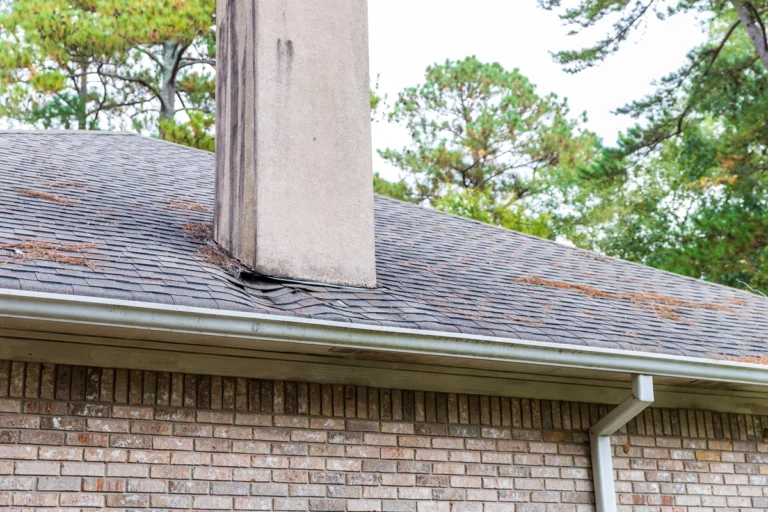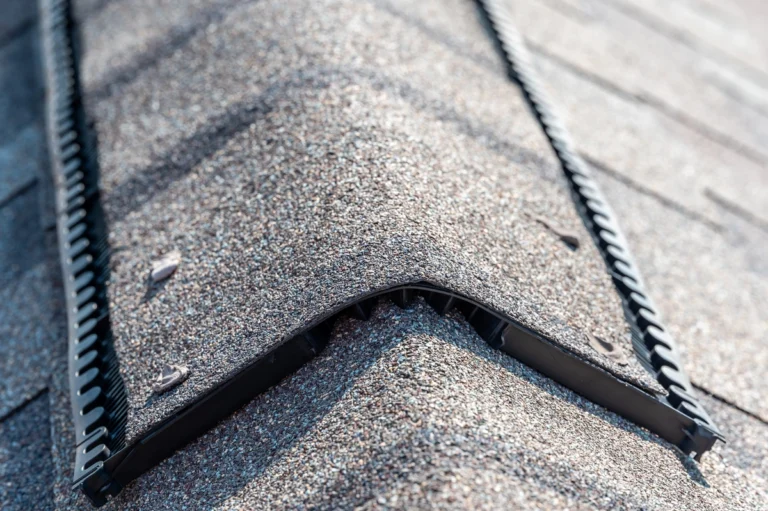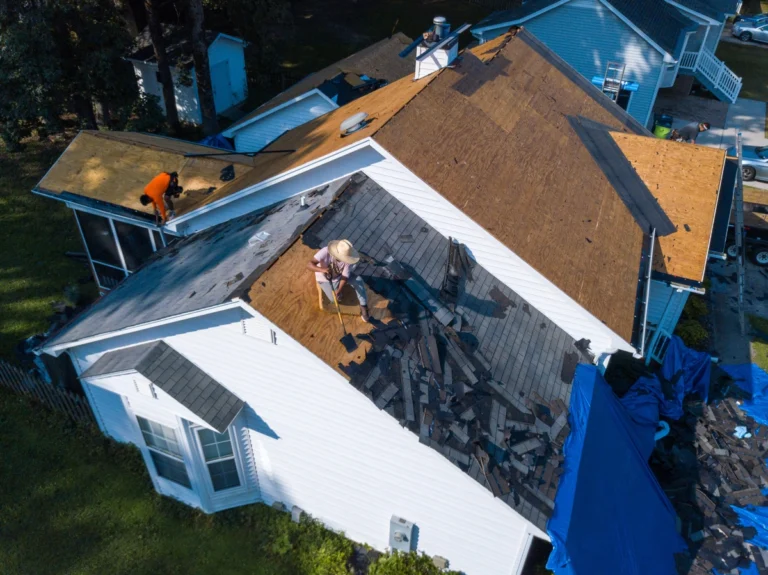Your home’s roof is its first line of defense against the elements, including storms. Severe weather can take a toll on your roof, whether it’s:
- A thunderstorm ⛈️
- Hurricane 🌪️
- Heavy snowfall ❄️
Roof storm damage is a common concern for homeowners, and if left unaddressed, it can lead to costly repairs and structural issues. In this blog post, we’ll delve into the dangers of a storm to your roof, how to spot storm damage, what to do if your roof has been damaged when to contact a professional, and the average cost of repairs.
The Dangers of a Storm to Your Roof
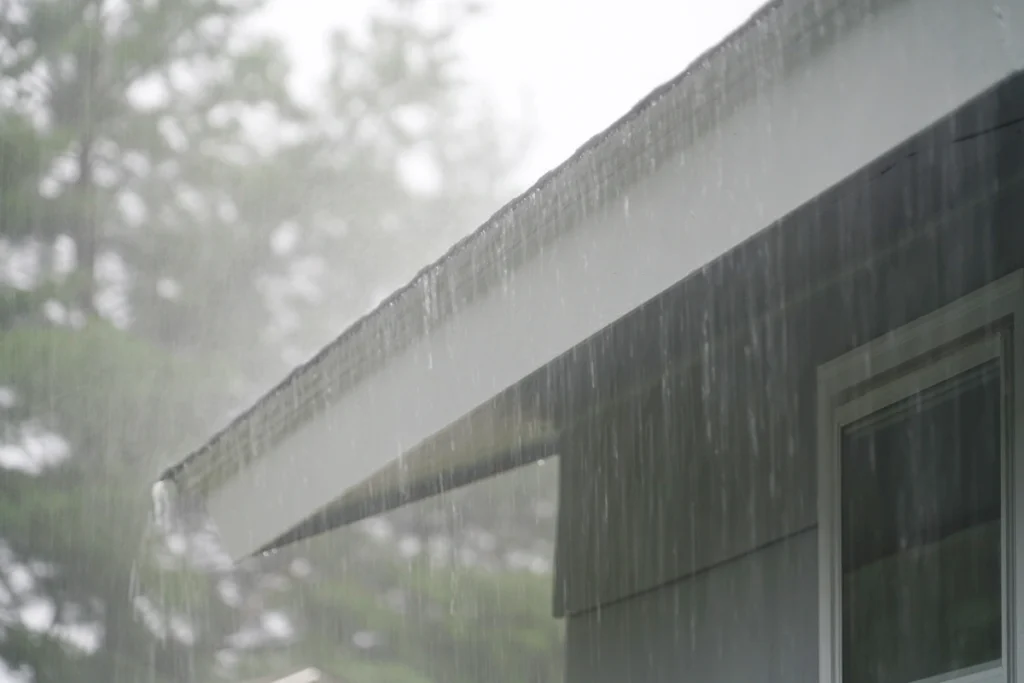
Storms can be merciless, subjecting your roof to a variety of potential threats. Here are some of the key dangers that can compromise your roof’s integrity during a storm:
- Heavy Winds: Strong winds are a common feature of storms, and they can exert immense pressure on your roof. This pressure can cause shingles to loosen, lift, or even blow away entirely. It can also lead to debris impact, which may puncture or dent your roof.
- Hail: Hailstones can range in size from small pellets to golf ball-sized projectiles. When hail pelts your roof during a storm, it can cause significant damage, including cracks, fractures, and dents in your shingles or roofing materials.
- Heavy Rain: Excessive rainfall can result in water accumulation on your roof, leading to leaks, water damage, and potential mold growth if left unattended. Clogged gutters or drainage systems can exacerbate the problem by preventing proper water runoff.
- Snow and Ice: In regions with cold winters, snow and ice accumulation can be a major concern. The weight of heavy snow on your roof can cause structural stress, leading to sagging or even collapse. Additionally, ice dams can form along the roof’s edges, leading to water infiltration beneath the shingles.
How to Spot Storm Damage:
Detecting storm damage early is essential to prevent further deterioration and costly repairs. Here are some signs to look for when inspecting your roof after a storm:
- Missing or Damaged Shingles: Check for any missing, cracked, or curling shingles on your roof. If you notice shingles that are out of place or appear damaged, they should be promptly repaired or replaced.
- Water Stains on Ceilings and Walls: Water stains on your ceilings or walls are a clear indication of a roof leak. If you see discolored patches or peeling paint, it’s essential to address the issue immediately.
- Granule Loss: Inspect your gutters and downspouts for an excessive amount of granules from your shingles. Granule loss is a sign of shingle wear and tear, which can make your roof more vulnerable to damage.
- Visible Cracks or Dents: Examine the surface of your roof for visible cracks or dents caused by hail or flying debris. These imperfections can weaken your roof’s protective layer.
- Damaged Flashing: Flashing is the material used to seal joints and transitions on your roof, such as around chimneys, vents, or skylights. Damaged or missing flashing can result in water infiltration.
What to Do if Your Roof Has Been Damaged: 4 DIY Tips
If you suspect that your roof has been damaged during a storm, it’s essential to take prompt action to mitigate further harm. Here’s what you should do:
1) Safety First
Ensure your safety and the safety of others by avoiding climbing onto the roof during or immediately after a storm. Wait until conditions are safe before inspecting the damage.
2) Document the Damage
Take photographs or videos of the damage, as these will be valuable for insurance claims and professional assessments.
3) Temporary Repairs
If you discover minor damage that can be temporarily patched, such as small holes or missing shingles, consider making temporary repairs to prevent further water infiltration. However, remember that these are not permanent solutions and should be followed by professional repairs.
4) Contact Your Insurance Company
Notify your insurance company of the damage as soon as possible. Provide them with the documentation you’ve collected and follow their guidelines for filing a claim.
When to Contact a Professional
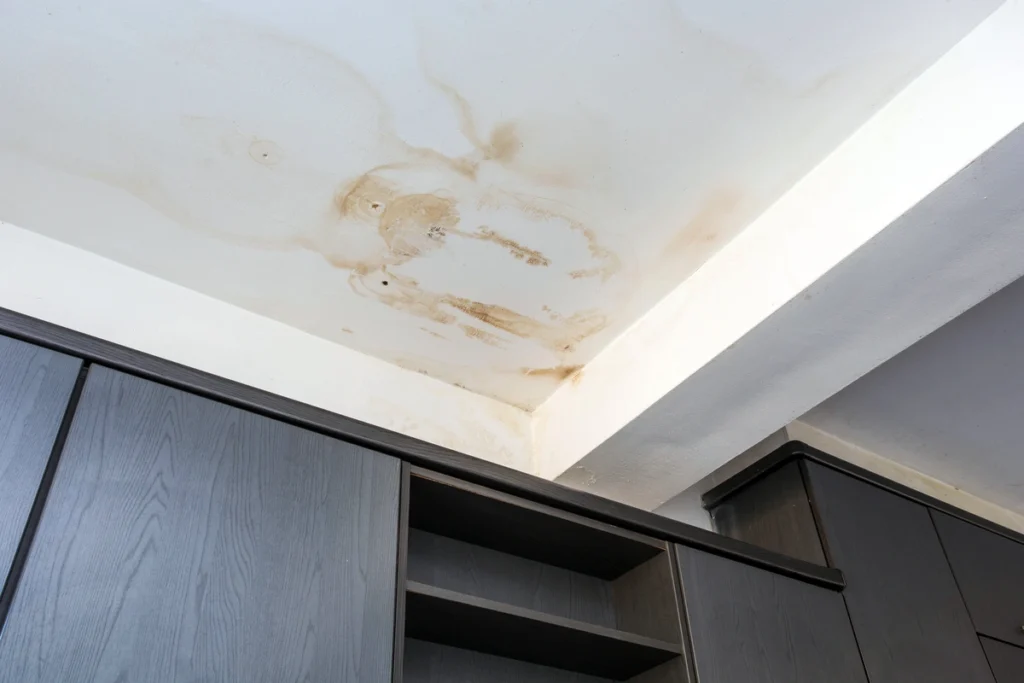
While some minor storm damage may be manageable for DIY enthusiasts, it’s often best to leave roof repairs to professionals. Here are some situations in which you should contact a roofing contractor:
- Severe Damage: If your roof has sustained significant damage, such as widespread shingle loss, structural issues, or extensive leaks, it’s crucial to call a professional roofing contractor. Attempting major repairs yourself can be dangerous and may worsen the problem.
- Safety Concerns: If you’re uncomfortable working at heights or lack the necessary equipment and experience, it’s safer to hire a professional roofer who can complete the repairs safely and effectively.
- Warranty and Insurance: Roofing professionals are well-equipped to handle warranty claims and work directly with your insurance company to ensure that you receive the coverage you deserve.
- Hidden Damage: Some roof damage may not be immediately visible to an untrained eye. Professionals can conduct a thorough inspection to identify any hidden issues and provide comprehensive repairs.
The Average Cost of Repairs
The cost of repairing storm damage to your roof can vary significantly depending on the extent of the damage, the type of roofing material used, and your location. On average, roof repair costs can range from a few hundred dollars to several thousand dollars.
Minor repairs, such as fixing a few missing shingles or sealing small leaks, are on the lower end of the cost spectrum. However, major repairs or roof replacement due to extensive damage can be quite expensive.
It’s essential to obtain multiple quotes from reputable roofing contractors to ensure you get a fair price for the necessary repairs. Additionally, check with your insurance company to understand what coverage you may be eligible for and what out-of-pocket expenses you can expect.
Get Help From a Professional Roofing Company
Roof storm damage is a common and potentially costly issue that homeowners must be prepared to address. Understanding the dangers of storms to your roof, knowing how to spot storm damage, and taking appropriate action when damage occurs are essential steps in protecting your home. While some minor repairs can be tackled as DIY projects, it’s often wise to consult with a professional roofing contractor for major damage or hidden issues.
At Sundance Kitchen, Baths, & Exteriors, we’re here to help deal with roof damage after a major storm. Contact us today to set up your roof inspection!

